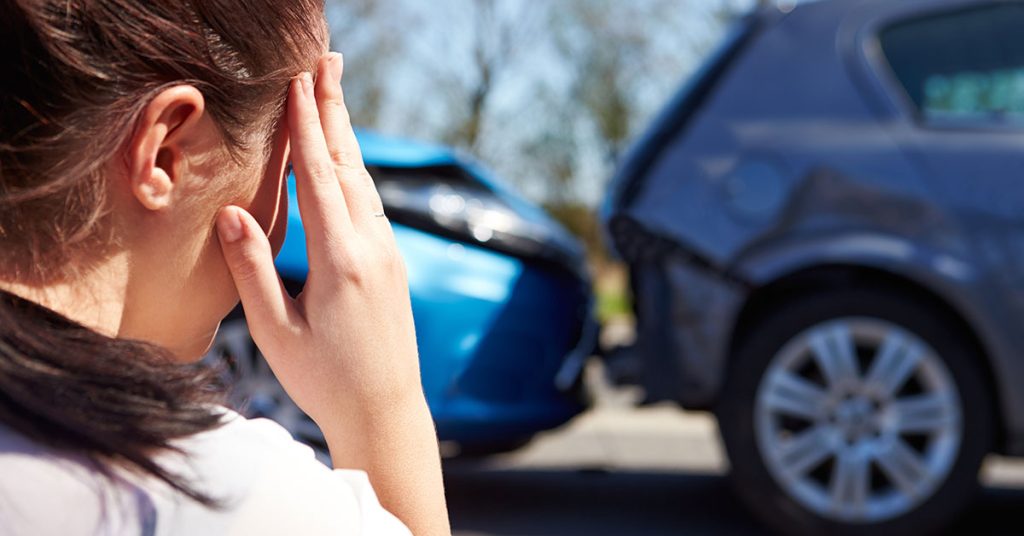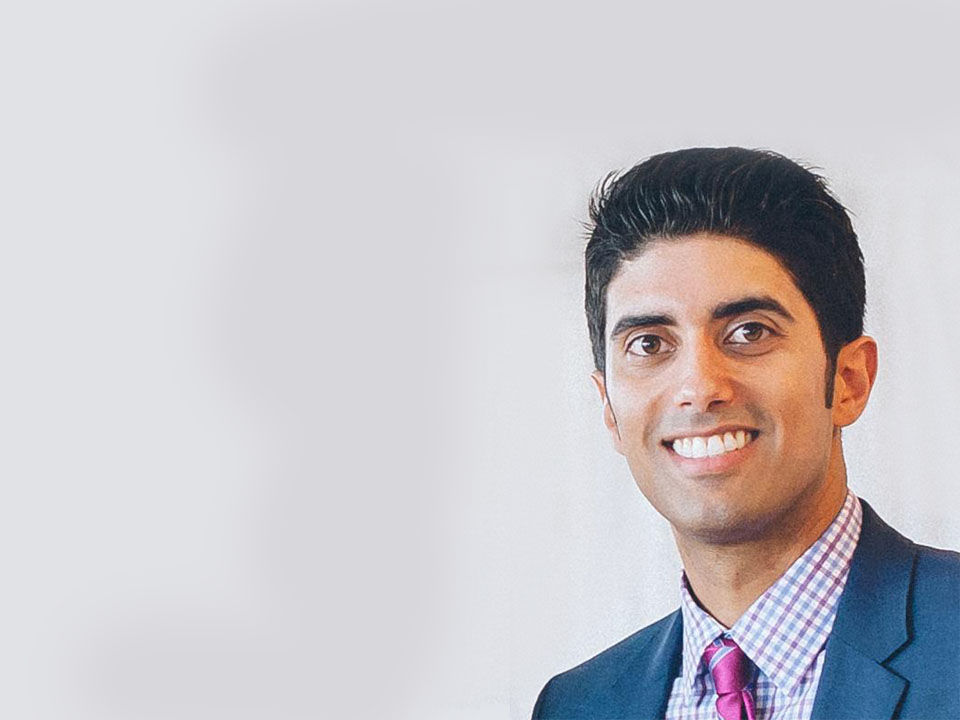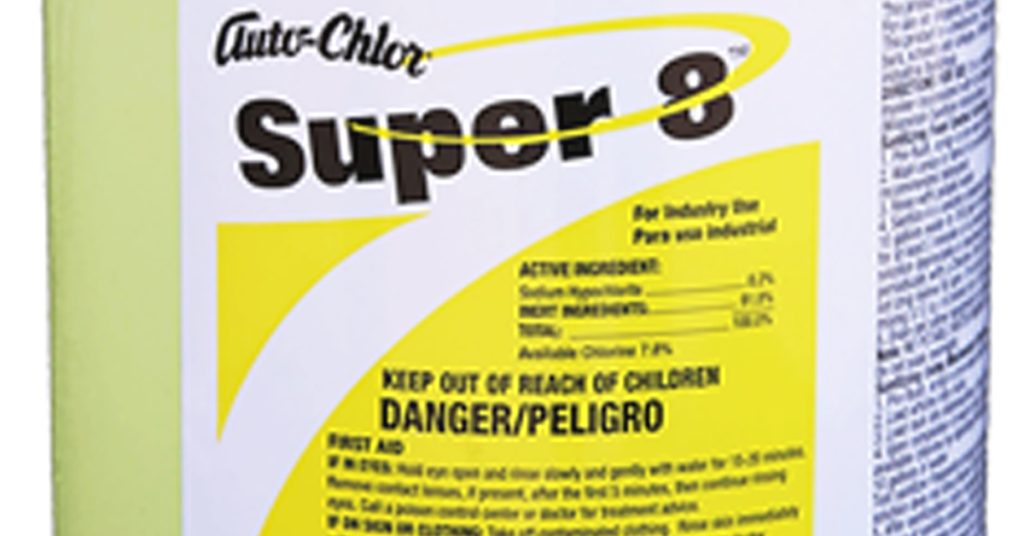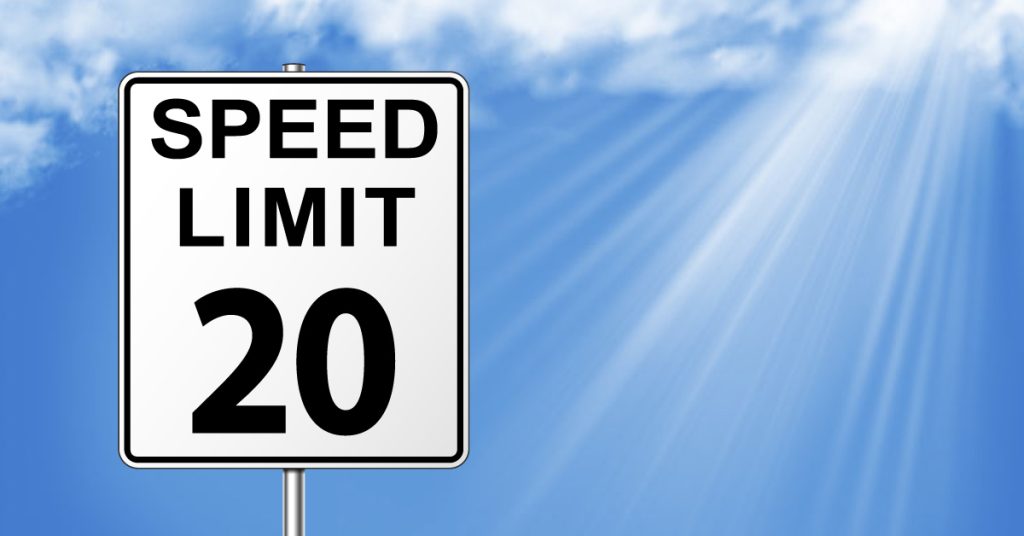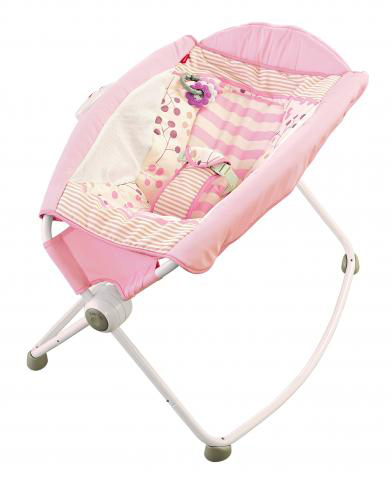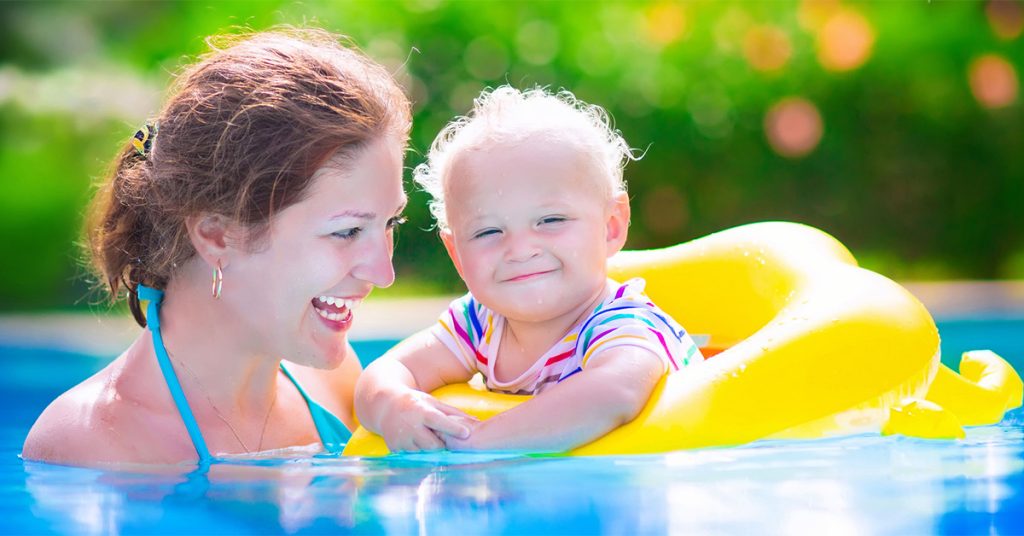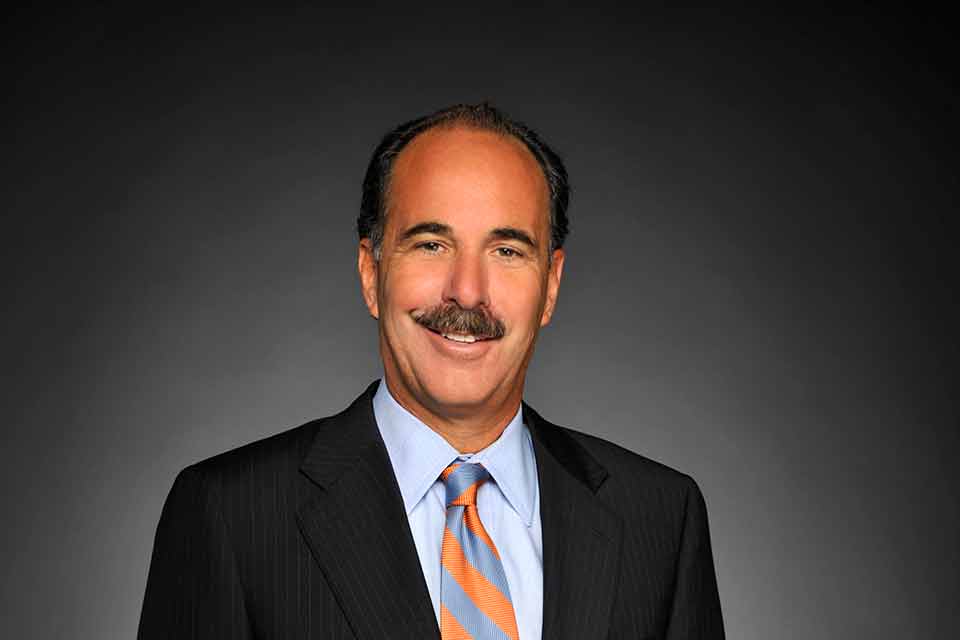Posts Tagged ‘“Boston personal injury lawyer”’
Brain Injury Awareness Month: Would You Recognize the Symptoms of a Concussion?
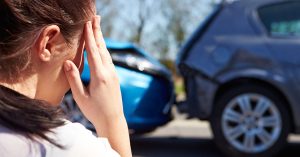
After a car accident is a critical time to seek medical care and screening for a concussion.
March is Brain Injury Awareness Month. Nearly 12 years ago, Massachusetts lawmakers passed legislation to develop a concussion safety program for high school athletes. Before they play, student-athletes and their parents must now learn about concussion symptoms. If students are injured, they must follow step-by-step guidelines for recovery. The goal is to make sure students fully heal from concussions.
Just as students have learned about concussions, Brain Injury Awareness Month offers others a chance to learn.
These are essential lessons, helping us care for ourselves and our families. The sooner one identifies potential concussion symptoms, the sooner they can seek a medical evaluation and begin rest and recovery. Below, we write about concussions, symptoms and high-risk situations when one may consider seeking a medical evaluation as a precaution.
What is a Concussion?
A concussion is often called a mild traumatic brain injury or “mild TBI.” A concussion may follow a bump, blow or jolt to the head, or a hit to the body that causes the head and brain to move quickly back and forth, according to the Centers for Disease Control and Prevention (CDC).
There may be no visible bruising, skull fracture or head injury, but the sudden movement can impact the brain’s function.
When one suffers a concussion, they may experience a range of symptoms impacting their health. It can be very difficult to read the symptoms, which may include one or more symptoms:
- headaches
- memory loss
- feeling groggy
- difficulty sleeping (or sleeping too much)
- mood and behavior changes
- balance problems
- slurred speech
- dizziness
- nausea or vomiting
- confusion
- decreased coordination
- sensitivity to light
- irritability
- In adults, one pupil may appear larger than the other.
Symptoms may appear right away or in the hours after a concussion, or they may be delayed a few days and weeks.
One misconception is a person will lose consciousness if they suffer a concussion. This is not always true. In fact, on the sports field, one coach said athletes only lose consciousness in about 10 percent of all concussions cases (Source: Heads Up Video: What is a Concussion?, CDC).
When to Consider Seeking Medical Care
As important as it is to learn about concussion symptoms, there are also times when you should just receive medical care as a precaution. This includes after children’s injuries, sports injuries, car accidents, falls or bicycle accidents.
Children and Student-Athletes

Respond promptly if you suspect your child has sustained a concussion.
Start learning now before you suspect a possible injury. Look to your child’s pediatrician and school for information on concussion prevention, symptoms and how to respond to a potential concussion. This is important because your child’s brain is going to support them throughout their life and by understanding a few basics, you can minimize their risk of suffering an injury. But if your child does suffer a concussion at some point, what you learn now will help you be ready to help them receive care and fully heal before they start their full routines up again. To help you get started, read our page on the Massachusetts sports concussion safety law and helmet laws for children. Another resource is the CDC Heads Up web page.
Motor Vehicle Crashes
Motor vehicle crashes are a leading cause of concussions and traumatic brain injury. The violent force of a collision can cause many injuries, from whip-lash to broken bones and head injuries. One can suffer a concussion in crashes at any speed and unlike other types of injuries, see no visible signs. One does not have to hit their head to sustain a concussion.
It can be hard to know whether you were injured after a car accident, so it is best to be proactive and call your primary care physician or visit a hospital emergency room.
Falls
When someone falls and hits the ground, they can suffer a concussion and it may be hard to recognize the signs, especially if the person is alone.
Older adults and younger children are more vulnerable to suffering falls. They are also at the highest risk for going without treatment. Consider how difficult it is for many adults to recognize they may have suffered a concussion; then think about young children, who may have limited speech. When it comes to young children, look for signs of discomfort, such as constant crying, trouble sleeping or the child may not eat. Contact your child’s pediatrician so they can advise you on the next step.
As for older adults, the CDC reports more than 34,000 adults age 65 and older died in falls in 2019. Many of these falls involved TBI and broken bones.
If you have an older relative or friend, talk to them about the importance of seeking medical care after any type of fall. Immediate treatment can help them identify whether they have sustained a concussion or other injuries. This puts their primary care physician in a good position to help them manage their recovery, with their full understanding of the person’s medical conditions and what medications they take.
Bicycle-Related Head Injuries
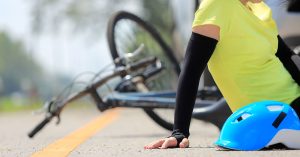
Cyclists can suffer many serious injuries in a crash. Always visit a hospital emergency room as a precaution.
Make a plan for safety. Should you ever fall on your bike or be involved in a bicycle accident, commit to seek immediate medical care right away. Have a doctor evaluate whether you sustained a concussion.
Medical care is critical for cyclists. In addition to concussions, cyclists are vulnerable to suffering broken bones around the face, jaw and fractured teeth in crashes, along with other injuries. While you may try to treat your own pain, a medical exam is the best first step to determine the source of all your swelling and injuries.
As a cyclist, you can take an important step and protect against head injury by wearing a helmet. When cyclists wear helmets, the reality is they may still suffer injuries in a collision. But cyclists are more likely to survive a bike crash without the cognitive, physical or mental complications of a severe and traumatic brain injury. This is critically important because it improves one’s long-term chances for making a full recovery.
According to the CDC, helmets reduce the risk of head injury by absorbing much of the impact energy from a fall or a bicycle accident. Helmets protect the skull and brain from more severe injury.
After a Concussion, The Importance of Follow Up Medical Care
Another time to consider medical care is in the days, weeks and months following your initial treatment for a concussion. It is important that you fully heal. If you suffer a second concussion while you are still recovering, you are at risk for second impact syndrome and long-term complications.
The CDC reports many concussions are not fatal. Many people recover from concussions within a few weeks, with rest, plenty of sleep and patience.
But some injuries take more time. The National Institute of Health reports one study found nearly a quarter of patients struggle with physical and mental problems related to a concussion a full year later. Another study tracked 831 patients at 11 major trauma centers across the country and found not every patient receives follow-up care.
- Within three months of their injury, fewer than half of the patients – 44 percent – had followed up with a health care professional.
- Notably, when patients visited medical centers with dedicated TBI clinics, they were more likely to receive follow-up care.
- Patients who had more serious injuries (those who had CT Scans that showed tissue damage) had a higher rate for follow-up care, but even then only 61 percent sought follow-up care.
There are many reasons patients may not follow up after a concussion. This study noted just 42 percent of patients received educational materials as they left treatment; just 27 percent received a follow-up call from the hospital.
Make it your priority to follow up with your primary care doctor for as long as it takes.
Follow your doctor’s instructions for every phase of your recovery: when you are ready to drive and go back to work. Follow any limits your doctor sets, such as restricting cell phone use.
Take the family member along to your doctor’s appointments. This gives your loved one a chance to learn about the symptoms of a concussion and how you should progress.
Ask a loved one to play an active role in your treatment and help you observe your recovery. You may need help tracking activities at times, such as how many hours you sleep or how many times you contact your doctor with concerns. Write down any medical instructions you receive, or print messages from your online medical records, so you and your loved one can review them together over the next few months.
Free Legal Consultation – Boston TBI Attorneys
At Breakstone, White & Gluck, our Boston personal injury lawyers have over 100 years combined experience representing those who have been seriously injured or killed by the negligence or wrongdoing of others.
Our lawyers have extensive experience representing clients who have suffered concussions and traumatic brain injuries as a result of someone else’s negligence, helping them recover compensation for their medical expenses, loss of future income and other damages.
Our attorneys represent clients in Boston, Cambridge, Arlington, Somerville, Everett, Quincy, Milton and across Massachusetts. If you have been injured, learn your legal rights. For a free legal consultation, call 800-379-1244 or 617-723-7676 or use our contact form.
Attorney Reza Breakstone Featured in LexisNexis Attorney Spotlight Series
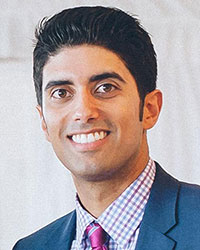 Attorney Reza Breakstone was recently featured in the LexisNexis Attorney Spotlight Series and discussed specialization, referrals and reviews. Read the article on the LexisNexis website or the PDF version.
Attorney Reza Breakstone was recently featured in the LexisNexis Attorney Spotlight Series and discussed specialization, referrals and reviews. Read the article on the LexisNexis website or the PDF version.
Chemical Inhalation Exposure Kills Restaurant Employee
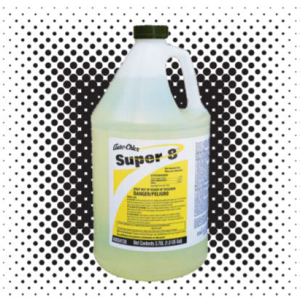 A tragic chemical exposure has claimed the life of a worker at the Buffalo Wild Wings restaurant in Burlington. Ten other restaurant employees and patrons also reported inhalation injuries.
A tragic chemical exposure has claimed the life of a worker at the Buffalo Wild Wings restaurant in Burlington. Ten other restaurant employees and patrons also reported inhalation injuries.
The Boston Globe reported that a male employee cleaning the kitchen with a product called “Super 8” was overtaken by nausea. The employee stepped outside to catch his breath. A second employee who attempted to remove the cleaner became sick and subsequently died from inhalation injuries. According to the Globe, the 10 other employees and restaurant patrons reported shortness of breath, burning eyes and other symptoms of chemical exposure for which they were treated at local emergency rooms.
News reports identified the caustic cleaning agent as “Super 8”, a sodium hypochorite concentrated solution which is intended for use as a general-purpose sanitizer empty stain or for manual or automatic dishwashing. When inhaled, the fumes cause severe bronchial irritation and pulmonary edema.
Chemical exposures in restaurants occur with alarming frequency. Breakstone, White & Gluck has represented several victims of chemical exposures due to inhalation and caustic burn injuries. In our experience, inhalation injuries such as the recent Buffalo Wild Wings incident occur as a result of the failure to provide:
- adequate ventilation;
- adequate airway protective gear
- ill-advised mixing of chemical agents
- adequate skin protective gear
Breakstone, White & Gluck has a track record of success in obtaining justice for victims of serious respiratory and burn injuries caused by chemical exposures in the workplace. In many of these cases, the exposures result in life-long respiratory injuries, scarring and emotional distress.
Recent cases:
- Our attorneys represented a worker who inhaled chlorine at the Deer Island Waste Facility in Boston and suffered severe burns which temporarily handicapped him, leaving him unable to work.
- Our attorneys represented a restaurant worker who consumed tainted beer from a recently sanitized beer tap. The lines had been chemically sanitized, but not properly flushed, resulting in ingestion of chlorine which caused esophageal burns.
Free Legal Consultation – Breakstone, White & Gluck of Boston
We would welcome the opportunity to review your potential claim related to chemical exposure and inhalation injuries or burns to see if we can assist you in obtaining full and fair monetary compensation.
Please contact the Boston personal injury lawyers at Breakstone, White & Gluck for a free and confidential legal consultation. Call 800-379-1244 or 67-723-7676 or use our contact form.
In the Battle for Safety, Cambridge Lowers Speed Limits to 20 MPH

Drivers, double check your speed next time you visit Cambridge. In mid-November, the city plans a slow down to 20 mph on most city-owned streets. The city says, when in doubt, go 20 mph.
The City of Cambridge announced the new 20 mph speed limit this week, a decision made in response to residents’ concerns about speeding vehicles and the risk for pedestrian accidents and injuries to cyclists. Cambridge follows Boston and Somerville in pursuing 20 mph speeds on certain city streets. Each city has a VisionZero safety campaign and is working to eliminate traffic fatalities.
Cambridge first lowered speed limits from 30 to 25 mph on most city-owned streets in December 2016. The Massachusetts Legislature granted cities and towns this authority earlier that year with passage of the Municipal Modernization Law. Specifically, communities were given the authority to lower speeds from 30 to 25 mph in locally-owned thickly settled areas.
In response, dozens of communities adopted 25 mph speed limits to reduce the risk of accidents. Few have pursued 20 mph – yet.
But according to the City of Cambridge’s announcement, the law allows communities to establish 20 mph “safety zones” in the interest of public safety. Cambridge will be installing 660 new “safety zone” signs.
The City of Somerville has also taken advantage of this provision of the law. Last we knew, the City of Boston – which was the first to pursue 25 mph, then 20 mph speeds – was still working on the issue. Here is our last update on Massachusetts speed limits (though please note: there may have been additional action since then).
Check a street: Not every street in Cambridge will be impacted. Larger streets like Brattle Street and Cambridge Street will stick with current speeds. Roads under state management – such as Memorial Drive – will not change. You can check out the map here: www.cambridgema.gov/20mph.
It’s worth noting Cambridge’s squares – including Harvard Square, Lechmere Square and Porter Square – won’t see any change. The city lowered speeds to 20 mph back in early 2018.
Cambridge’s Influence on Traffic Safety
Cambridge has been ambitious in making traffic safety improvements. In addition to lowering speeds, the city announced a new City Safety Ordinance earlier this year. The city made the commitment to add permanent separated bike lanes whenever it reconstructs roads identified in the Cambridge Bicycle Plan. With full build out, this would give the city an impressive 20 miles of protected bike lanes. Cambridge Bicycle Safety, a local group, said this could reduce 40 percent of Cambridge bicycle accidents, the one which occur outside intersections.
The city, while committed, does concede there may be cases when these bike lanes aren’t possible due to road conditions.
The bottom line is Cambridge has such a strong influence on transportation in the Boston region, just by virtue of its geography. It borders Somerville, Boston, Arlington, Belmont and Watertown. And because it’s one of the largest cities in Massachusetts, its work to promote safety will be watched across the state and nationally.
Free Legal Consultation – Boston Pedestrian Car Accident Lawyers
Breakstone, White & Gluck has represented accident victims in Boston, Cambridge and across Massachusetts since 1992. Our attorneys are dedicated to our clients and our results. We provide the prompt and thorough investigation required after pedestrian car accidents and bicycle crashes.
If you have been injured by a driver, we offer a free legal consultation to advise you on whether you may pursue a financial claim for your injuries and other losses. Consult one of our personal injury attorneys today at 800-379-1244 or 617-723-7676. You can also use our contact form.
After Millions of Recalls, New Safety Standard Proposed for Infant Sleepers
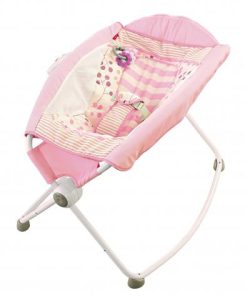
Fisher-Price recalled its Rock ‘n Play sleeper in April.
Last April, Fisher-Price made its jarring announcement: 10 babies had died in its sleepers after rolling from their backs to their stomachs. Fisher-Price urged parents to take children out of the sleepers once they reach 3 months old or begin turning themselves over.
This advisory didn’t stand. Soon thereafter, Consumer Reports published the results of its own investigation, which identified 32 infant deaths. Within the week, Fisher-Price and Mattel, its parent company, had recalled 4.7 million unsafe sleepers.
Now six months later, The Washington Post reports that 59 babies have died in Rock ‘n Play sleepers. At least two other companies, Kids II and Dorel Juvenile Group USA, have recalled their infant sleeper products. At the time of the recall, 5 infants had died on the Kids II sleepers.
Last week, the Consumer Product Safety Commission (CPSC) proposed a new safety standard for infant sleep products. This would limit the seat back angle for sleep to 10 degrees or less.
Why Was the Fisher-Price Rock ‘n Play So Dangerous?
Fisher-Price introduced the Rock ‘n Play in 2009, inventing the category of inclined sleepers, which allowed babies to sleep at a 30 degree angle. From the start, this design completely disregarded the American Academy of Pediatrics’ safe-sleep guidelines, which recommend babies sleep on their backs in an empty crib or bassinet to avoid accidental suffocation.
One problem was Fisher-Price didn’t do thorough safety testing or consulting with medical experts. But you can’t overlook the fact that Fisher-Price has been a giant in children’s products and how that influenced the discussion. As one pediatrician told The Washington Post, “This is not something I’d recommend using. But parents see that it’s from Fisher-Price and think, ‘They wouldn’t be able to sell anything that isn’t safe.’ ”
New Research Findings
The CPSC asked an assistant professor of orthopedic surgery who specializes in infant biomechanics to lead a study on inclined sleep products. The professor is based at the University of Arkansas for Medical Sciences. She and her team found evidence that babies age 2-6 months on average who were placed in inclined sleep products were at a higher risk of suffocation, when compared to a flat crib mattress.
- Her team concluded that none of the inclined sleep products tested were safe for infant use.
- The university team suggested the angle of the incline be no more than 10 degrees. The lying surface should be flat and rigid, not soft or plush-like.
- The team reported that babies who were placed on their stomach in their sleepers or who rolled over had to exert as much as 200 percent more core strength than those on a flat crib mattress.
- Finally, the university team reviewed police reports and interviews from 91 cases of infant suffocation. In many cases, the caretaker reported they had never seen the infant roll over before.
This was a recurring point in the team’s findings. Many of the children were rolling over for the first time when they were found.
Here is additional information for further reading:
UAMAS Research into Baby Biomecanics Shows Issues with Infant Inclined Sleepers, University of Arkansas
After Infant Deaths, Fisher-Price Rock ‘n Play Sleeper is Recalled, Massachusetts Injury Lawyer Blog
More Infant Sleep Products Linked to Deaths, Consumer Reports
Consumer Product Safety Commission: No More Inclined Sleepers, Chicago Sun Times
Free Consultation – Boston Product Liability Lawyers
With more than 100 years combined experience, Breakstone, White & Gluck specializes in plaintiff representation in product liability cases. We represent clients throughout Massachusetts, from Boston to Cambridge to Plymouth, Brockton and Cape Cod to the North Shore.
If you have been injured, learn your legal rights. For a free legal consultation, contact our firm at 800-379-1244 or 617-723-7676. You can also use our contact form.
Drivers Running Red Lights Causing Record Number of Car Accidents in Massachusetts, Across the U.S

Drivers who run red lights are causing a record number of deaths in Massachusetts and across the U.S., according to a new study.
While red means stop, we have all seen cars speed on, especially if you live in Boston. Our attorneys have represented countless clients who have been seriously injured or killed by another driver’s recklessness at intersections. Now, a new study reports running a red light is causing a record number of traffic fatalities across the United States. From AAA’s Foundation for Traffic Safety:
- Red light running crashes have reached a 10-year high in the U.S.
- 939 people were killed when drivers sped through red lights in 2017, a 28 percent increase over 2012.
- More than a quarter of all intersection accidents happen because drivers run red lights.
- Nearly half of those injured in red light crashes were passengers or occupants of other vehicles. Pedestrians and cyclists accounted for more than 5 percent of fatalities.
- Over 35 percent of traffic deaths were red light running drivers themselves.
- 85 percent of drivers consider it very dangerous to run a red light, yet one in three reported speeding through one in the past 30 days, according to AAA Foundation’s Traffic Safety Culture Index.
- On the same note, nearly half (more than 2 out of 5 drivers) found it unlikely that they would ever be stopped by law enforcement.
- Despite these responses, running a red light can have serious consequences, resulting in a possible insurance surcharge or criminal charges.
AAA officials count Americans driving more and distracted driving as two causes. Meanwhile, the Federal Highway Administration reports more than 50 percent of fatal and injury crashes in the U.S. happen at or near an intersection.
Massachusetts Red Light Accidents
Red light crashes are a danger at Massachusetts intersections. From 2008 to 2017, Massachusetts lost 43 people when drivers ran red lights, according to Wicked Local. These deaths are just the drivers who were caught and are in addition to other injuries.
Safety Recommendations: Roundabouts and Traffic Cameras
AAA officials say roundabouts and traffic cameras could reduce the number of crashes. Massachusetts is actively working to convert rotaries into roundabouts, which are considered safer because they force drivers into the correct lanes. However, with more than 100 rotaries across Massachusetts, change will take time.
There is long-standing opposition to traffic cameras at Massachusetts intersections, even as AAA says traffic cameras have reduced fatal red light running crashes by 21 percent in large cities. Overall, traffic cameras have contributed to a 14 percent reduction in all fatal crashes at signalized intersections.
Unlike some states, Massachusetts does not have a state law permitting use on local intersections. While MassDOT operates traffic cameras along the MassPike, there is a battle over local intersections.
More than a decade ago, several Massachusetts communities attempted to pass ordinances allowing for red light cameras, among them Saugus, Lawrence and Springfield. South of Boston, Brockton also approved a local traffic camera ordinance. Traffic cameras were never installed. Citing privacy concerns, state lawmakers declined to pass the legislation necessary for these local ordinances to stand. Now years later, there are state lawmakers interested in similar legislation, so we may be revisiting the debate at some point. Here is one lawmaker’s blog.
Across state lines, you may find traffic cameras at red lights in Rhode Island, along with 19 other states. Rhode Island, however, does not have a state authorizing the use of speed cameras (Source: Governors Highway Safety Association).
AAA only recommends traffic cameras at intersections with demonstrated patterns of red light violations or high crash rates. Cameras should be part of broader traffic safety programs and drivers should be notified through signage and other methods.
Reducing Red Light Accidents in Massachusetts
Drivers have a responsibility to operate with care and pass other vehicles, cyclists and pedestrians at a safe distance in Boston and every other community in Massachusetts.
The Boston area commute is stressful. Leaving your home a few minutes earlier was once an effective way to beat the traffic. Unfortunately, as traffic congestion has grown, you now have to leave even earlier in many Massachusetts communities and that isn’t always enough to beat the 2-3 hour commutes. But even in these conditions, practicing patience and putting down your cell phone are paramount to preventing red light crashes and distracted driving accidents causing injury or death. Always watch for pedestrians and cyclists, maintaining a safe distance at all times and taking extra care when approaching crosswalks and bike lanes. Remember you may not be able to see a pedestrian until that moment they step onto the road.
Free Legal Consultation – Boston Car Accident Lawyers
Breakstone, White & Gluck has been recognized for our superior results for clients. Founded in 1992, our law firm specializes in representing those who have been injured due to the negligence and wrongdoing of others. We specialize in handling cases involving car accidents and truck crashes in Boston, Cambridge, Cape Cod, the South Shore, the North Shore and across Massachusetts. If you have been injured, learn your rights. Contact our firm for a free legal consultation: 800-379-1244 or 617-723-7676 or use our contact form.
Safety Reminders to Protect Children from Swimming Pool Drownings
 Each year, families head into summer, hoping for fun in Massachusetts. No one expects tragedy in the backyard swimming pool. But each year, children suffer drownings and near drownings. Drowning is a leading cause of death among young children in Massachusetts and across the U.S. Young children ages 1 to 4 face the highest risk, followed by older children and teens between the ages 10 and 19, according to the American Academy of Pediatrics (AAP).
Each year, families head into summer, hoping for fun in Massachusetts. No one expects tragedy in the backyard swimming pool. But each year, children suffer drownings and near drownings. Drowning is a leading cause of death among young children in Massachusetts and across the U.S. Young children ages 1 to 4 face the highest risk, followed by older children and teens between the ages 10 and 19, according to the American Academy of Pediatrics (AAP).
Breakstone, White & Gluck, a Boston personal injury law firm, encourages parents and property owners to prepare for the swim season. By acting now, before the temperature rises, property owners and parents can minimize the risk of drowning and injury this summer.
For Pool Owners
Secure Pool Fencing
Pool owners have a responsibility to secure their pools with a strong durable fence. This is your legal responsibility and one of the most important steps you can take to prevent a child from a swimming pool drowning. The Consumer Product Safety Commission recommends pool owners install a four-sided fence with a self-closing latch around all pools and spas. The fence must be at least 4 feet tall in Massachusetts and must meet certain requirements for vertical clearance and width for fence openings. Read our past blog on pool fencing or check out this guide on a local community’s website.
If you own a pool, consider adding some additional fencing, shrubs or a planter – or several blocking access to your pool door and fence. This is called a “layers of protection” strategy and the goal is to slow children down so an adult can intervene.
Inspect Your Pool Regularly
Make it a habit to walk outside and inspect your pool daily during the summer months.
Pool Alarms
Consider purchasing a pool alarm to monitor your pool area. There are different types of alarms so do your research and select the best for your needs. But remember, a pool alarm is a supplement to your strong fencing and regularly inspecting your pool.
Drains
Pool owners should regularly maintain drain systems and ensure they work properly. Spas should be covered and locked when out of use. Children should never wear loose accessories into the pool.
For Parents
Swimming Lessons
Parents who sign children up for swim lessons give them an advantage. Formal swimming lessons reduce the likelihood of childhood drowning by 88 percent, according to the USA Swimming Foundation. The American Academy of Pediatrics advises that swim lessons are beneficial for children around age 1 and older.
Supervision: Always Watch and Avoid Distractions
Parents should swim with younger children, practicing “touch supervision.” Keep them within your reach at all times on the shallow end. Even if you are not in the pool with them, still closely watch other children and teens carefully at all times.
Keep conversation with other adults at a minimum when watching children swim. Also set aside all distractions, such as cell phones. It takes much longer than you may realize to “quickly” check your cell phone, e-mail or social media accounts. In that time, a child could drown right in front of you, quickly and silently struggling.
If you are a pool owner and have guests over, be just as vigilant in watching children swim. Try inviting over small groups – just a child or two – to enjoy your pool to keep the visit manageable.
Supervision: The Danger of “Non-Swim Time”
Learn more about the dangers of “non-swim time.” Bode Miller and his wife Morgan have recently discussed this and it’s an important term for both parents and pool owners.
The Millers tragically lost their 19-month-old daughter last year when she drowned in a neighbor’s backyard swimming pool. The child had been in the house with her mother, siblings and other adults.
”Without it being an actual swim time, my awareness and my intensity around protecting her from water was let down,” Morgan Miller said in an interview posted on the American Academy of Pediatrics (AAP) YouTube channel.
The Millers also recorded this public service announcement for the AAP.
About Breakstone, White & Gluck
Breakstone, White & Gluck is a Boston personal injury law firm. We are committed to promoting safety for children and families through our Project KidSafe campaign. We encourage parents and caretakers to supervise children by the pool and near pools this summer. We also remind property owners that they have a legal responsibility to keep a safe pool area so no one is injured. Learn more about Breakstone, White & Gluck on our website.
Attorney Marc L. Breakstone: Assessing bias in voir dire after ‘Williams’
Attorney Marc L. Breakstone recently authored an article which appears in the May 2019 edition of MATA Journal. The journal is published by the Massachusetts Academy of Trial Attorneys.
Assessing bias in voir dire after ‘Williams’
By Marc L. Breakstone
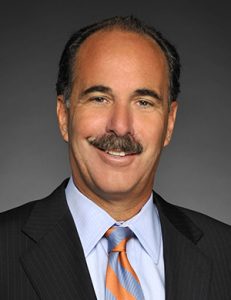
Attorney Marc L. Breakstone
The recent Supreme Judicial Court decision in Commonwealth v. Williams, 481 Mass. 443 (2019), generated quite a buzz on the MATA Listserv. Members questioned the significance of the decision, which analyzes how a potential juror should be screened for impartiality.
The opinion suggests that, regardless of the biased opinions or beliefs expressed by a potential juror during voir dire, the juror could be deemed impartial as long as the juror pledges to either set aside or disregard their opinion, to commit to deciding the case on the evidence and to follow the court’s instructions.
Williams meticulously analyzes how trial judges should determine impartiality when a prospective juror expresses potentially interfering bias during jury selection. The majority begins with the acknowledgment that “[o]ur jurisprudence regarding how to assess beliefs or opinions expressed by prospective jurors during voir dire has been less than clear.” The opinion then promises to “set forth factors that a judge should consider when a prospective juror discloses a belief or opinion based on his or her world view.” Clarity on these important subjects is what every trial lawyer seeks.
Unfortunately, Williams raises more questions than it answers. The defendant in Williams was charged with possession with intent to distribute a class B substance. During jury selection, a prospective juror raised her hand in response to a question whether there was “anything about the subject matter or your views about the subject matter that would affect your ability to be fair and impartial in deciding the case?”
During judge-conducted voir dire, the juror stated a belief that the criminal justice system is rigged against young African American males. When asked by the judge if she could put aside that opinion and bias, the juror stated she did not think she could put it aside.
Continue reading this article in the MATA Journal. The article begins on page 2.
Attorney Marc L. Breakstone
Attorney Marc L. Breakstone has practiced law in Boston for more than 30 years and focuses on the representation of plaintiffs in personal injury and medical malpractice cases. He has long advocated for expanded attorney participation in voir dire in Massachusetts.
About Breakstone, White & Gluck
The Boston personal injury lawyers at Breakstone, White & Gluck have over 100 years combined experience representing clients who have been injured by the negligence and wrongdoing of others in Massachusetts. If you have been injured or have lost a loved one, it is critical to learn your rights. For a free legal consultation, contact our attorneys at 800-379-1244 or 617-723-7676 or use our contact form.
MassBike and Light Brigade 2018: Helping Cyclists Be Seen at Night
Breakstone, White & Gluck was pleased to support MassBike’s Light Brigade 2018, which delivered bike lights to cyclists who needed a set so they can be visible to drivers. All Photos: Courtesy of MassBike Light Brigade 2018 Facebook Photo Album.
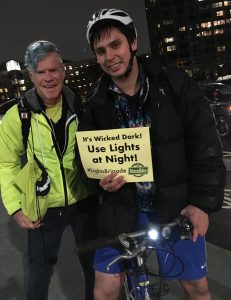 We want to say job well done to MassBike for helping cyclists ride safely at night in Massachusetts. Over the past few weeks, MassBike has been distributing bike lights to cyclists from near and far, shining a light on the importance of staying visible during these dark days of winter.
We want to say job well done to MassBike for helping cyclists ride safely at night in Massachusetts. Over the past few weeks, MassBike has been distributing bike lights to cyclists from near and far, shining a light on the importance of staying visible during these dark days of winter.
Under Massachusetts law, cyclists are required to use bike lights from 30 minutes after sunset until 30 minutes before sunrise. The front of the bike must be equipped with a white light (visible at least 500 feet away), with a red light or reflector on the back. Drivers must be able to see the rear light from at least 600 feet away.
MassBike is committed to getting lights to cyclists, reaching across 90 miles with this year’s campaign. Volunteers have given out lights in Boston, including in the Allston, Jamaica Plain and Charlestown neighborhoods and nearby: Cambridge, Lynn, Newton and Needham. Further west, cyclists in Northampton, Holyoke and Worcester also received lights. We’re told there may be more stops.
Breakstone, White & Gluck was a sponsor of MassBike’s campaign in 2017 and 2018. Other sponsors of the MassBike’s 2018 Light Brigade include Digital Lumens, Cycle Massachusetts and Charles River Wheelers.
More questions about Massachusetts bicycle laws? Read our article, “Quick Facts About Massachusetts Bicycle Laws.”
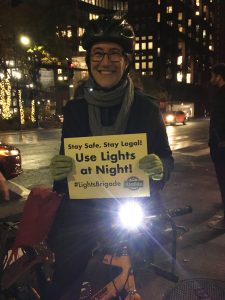

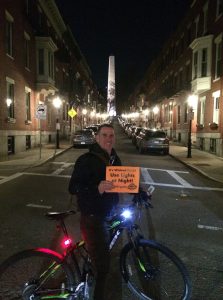
Photos: Courtesy of MassBike Light Brigade 2018 Facebook Photo Album.
About Breakstone, White & Gluck
With more than 100 years combined experience, Breakstone, White & Gluck is a Boston law firm specializing in personal injury and medical malpractice cases. Our partners founded our firm in 1992 and we have supported bicycle safety the entire way. For more than 20 years, we have sponsored bicycle clubs and organizations in the Boston area (and in some cases, ridden along the way; one of our partners is also a cyclist).
In 2013, our attorneys launched our Project KidSafe campaign, which has now given away more than 20,000 bicycle helmets across Massachusetts. Along the way, we have proudly worked with over 40 community organizations, including Massachusetts Safe Routes to School, more than a dozen police departments and bicycle committees in Milton, Westborough and Framingham. In 2017, we were recognized as a Silver Level Bicycle Friendly Business by the American League of Bicyclists.
Food Poisoning Closes Another Massachusetts Restaurant

A food poisoning outbreak has closed a Massachusetts restaurant in the middle of the summer season, raising concerns for diners.
A North Reading restaurant has been closed indefinitely after 39 diners filed complaints related to a salmonella outbreak. The source may be the antipasto salad, but the local board of health is still investigating.
The North Reading Board of Health shutdown Kitty’s Restaurant on Main Street on July 3. The board investigated the food poisoning, which may have initially occurred on June 23. After a thorough cleaning, the restaurant was allowed to re-open – though not for long. The restaurant has been closed again following a new report, this time from a June 25th visit.
According to a Boston 25 News report, the board’s investigation is focused on antipasto salad served at the restaurant. Nine complaints have been linked to salmonella poisoning on June 23. The other 30 cases from June 23 have not been confirmed yet. After the latest complaint from June 25th, the board has recommended testing for 46 workers and another full cleaning.
What is Salmonella Food Poisoning?
Salmonella poisoning is one of the most common types of food poisoning in the United States, according to FoodSafety.gov. The onset of symptoms can come within 12 hours or may take up to three days. Possible symptoms include nausea, stomach cramping, fever, abdominal cramping and vomiting. Fever and chills are also common. Expect symptoms to last 4-7 days.
Salmonella is not usually fatal in adults, according to the Mayo Clinic. With weakened immune systems, the elderly, young children and pregnant women are at risk for complications. Individuals who suffer from AIDS, malaria and other illnesses are also at a heightened risk, as are people taking anti-rejection drugs after organ transplants.
Causes of Salmonella Poisoning
There are many sources for salmonella poisoning. One is when eggs, meat and poultry are not properly cooked, then consumed. This can happen during processing and distribution before the food reaches consumers and businesses such as restaurants.
Failure to wash one’s hands can also lead to poisoning. If a restaurant worker doesn’t wash their hands, then handles food, they can pass along Salmonella contamination.
It can also be passed along by touch from pets and animals. Always wash your hands after contact with any animal, but most of all with birds and reptiles. You can be exposed in certain countries overseas. Do your research before international travel.
How to Report a Food Poisoning Case in Massachusetts
When suffering food poisoning symptoms after eating at a restaurant, always contact your community’s local board of health. The board will notify the Massachusetts Department of Public Health. Do the same if you consumed food at a local business.
These venues likely served other people on the same day you visited. The contamination may not be an isolated incident and needs to be investigated to protect others.
Can I File a Lawsuit in Massachusetts if I Suffer Food Poisoning?
Every food poisoning case is unique and should be explored with an experienced Boston food poisoning lawyer who can advise you of your legal rights. Not everyone exposed to food poisoning suffers illness, but others are left with long-term complications. Contacting a lawyer is an important step to preserve your legal rights.
Free Legal Consultation in Massachusetts Food Poisoning Cases
With over 100 years combined experience, the Boston personal injury lawyers at Breakstone, White & Gluck specialize in handling food poisoning cases. These cases are complex and must be investigated promptly.
For a free legal consultation, contact us at 800-379-1244 or 617-723-7676 or use our contact form.


